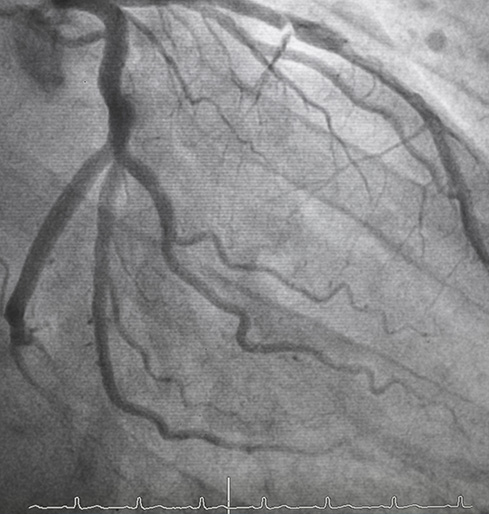Procedural Lab
At Cardiovascular Medicine, we want to make care as convenient as possible. To this end, we offer several in-office peripheral vascular services in our state-of-the-art procedural lab. Our lab features one of the most technologically advanced vascular imaging systems available in an office setting. Using high-tech equipment, our experienced cardiovascular physician specialists can detect and treat peripheral vascular disease on an outpatient basis.
When to See an Interventional Cardiologist
Peripheral vascular conditions occur when your peripheral arteries are narrowed or blocked, resulting in a lack of adequate blood flow. This can lead to painful symptoms, as well as put you at risk for serious complications such as amputation or stroke. Therefore, if you are at risk for peripheral arterial disease or are experiencing possible symptoms, it’s important to make an appointment to explore what’s going on. We can assess:

Diagnostic Testing
To examine your peripheral arteries, we use angiography, an imaging technique that uses X-ray and contrast dye to see how efficiently blood is flowing. The contrast dye provides improved visualization so we can identify areas of narrowing or blockage. We use minimally-invasive procedures to detect abnormalities in your extremities and kidneys, including:
Peripheral Vascular Treatments
We are proud to offer peripheral vascular services in-office to treat your narrowed or blocked peripheral arteries. By providing these services in our office, our patients experience the convenience of a safe, accessible environment, along with a predictable schedule and a lower cost. Our procedures are minimally-invasive and allow you to return to your normal activities sooner. Discover more about our procedural lab treatments.
Peripheral Angiogram
What is a Peripheral Angiogram?
A peripheral angiogram is a medical imaging procedure that allows us to take an inside look at your blood vessels. Using a contrast agent and X-ray imaging, a peripheral angiogram helps us identify any problems with blood flow caused by narrowed or blocked arteries.
Peripheral arterial disease can cause discomfort and pain, and can also lead to more serious complications if left untreated. If you are experiencing symptoms of peripheral artery disease, a peripheral angiogram can help you understand what’s going on. Common symptoms of peripheral arterial disease include:
- Leg discomfort, pain, or cramping with activity
- Leg numbness or weakness
- Heavy feet/legs
- Erectile dysfunction
- Slow toenail or leg hair growth
- Burning or aching in your toes while resting
- Cold legs or feet compared to the other limb
- Wounds and sores that won’t heal
What to Expect
Before a peripheral angiogram, we will ask you to fast, either for several hours before the test or overnight. We may also ask you to stop taking certain medications, such as blood thinners.
A peripheral angiogram takes about 30-40 minutes. We will perform the procedure in our office. First, you will lay on a table, while we place an IV to deliver sedation and help you relax. Next, we'll use numbing medication at the site of the catheter injection, near your groin or your arm.
Using a needle, we will insert a thin wire into a large artery in the groin area or near your arm. This wire guides a thin tube called a catheter. Once the catheter is in place, we inject contrast dye through the catheter and take pictures of the arteries using an X-ray machine. The images will allow us to identify areas where narrowing or blockages are present. The test will help us determine if you need treatment, such as peripheral angioplasty.
Recovery
You will spend several hours in a recovery room so we can observe your vitals and the site of the catheter insertions. It’s important to lay flat and keep your arm or leg straight for several hours after the test to keep the incision from bleeding. Drinking plenty of water helps flush the contrast dye from your body.
Someone will need to drive you home after the procedure, as you will be unable to drive yourself.
You should be able to resume moderate activity 24-48 hours after the test. Avoid strenuous activity or heavy lifting for a week.
Risks & Side Effects
Though peripheral angiograms are generally safe, they do come with a few risks. X-ray exposes you to radiation. Though the exposure is minimal, your risk depends on the number of X-rays you’ve had in the past. We don’t recommend the test for those who are pregnant. There are also risks when using contrast dye, though these are rare, including an allergic reaction or kidney damage.
Am I a Candidate?
If you have symptoms that could indicate peripheral circulation problems, or if you have risk factors for peripheral arterial disease, you may qualify as a candidate for screening.
There are certain risk factors that put you at higher risk for developing issues with blood flow and circulation. They include:
- Smoking
- High blood pressure
- Atherosclerosis
- Diabetes
- High cholesterol
- Being 60 years or older
More on Peripheral Angiograms
When Is an Angiogram Recommended?
What Causes Peripheral Arterial Disease?
Uncommon Risks and Side Effects of a Peripheral Angiogram
Though rare, complications from peripheral angiography are possible and can include:
- Bleeding
- Infection
- Nerve injury
- Blood clot
- Swelling caused by a collection of blood (hematoma)
- Damage to an artery or an artery wall
Meet Your Illinois and Iowa
Cardiovascular Physicians
CVM Locations
Insurance Providers We Accept
In Search of Care? Request a Consultation Today



